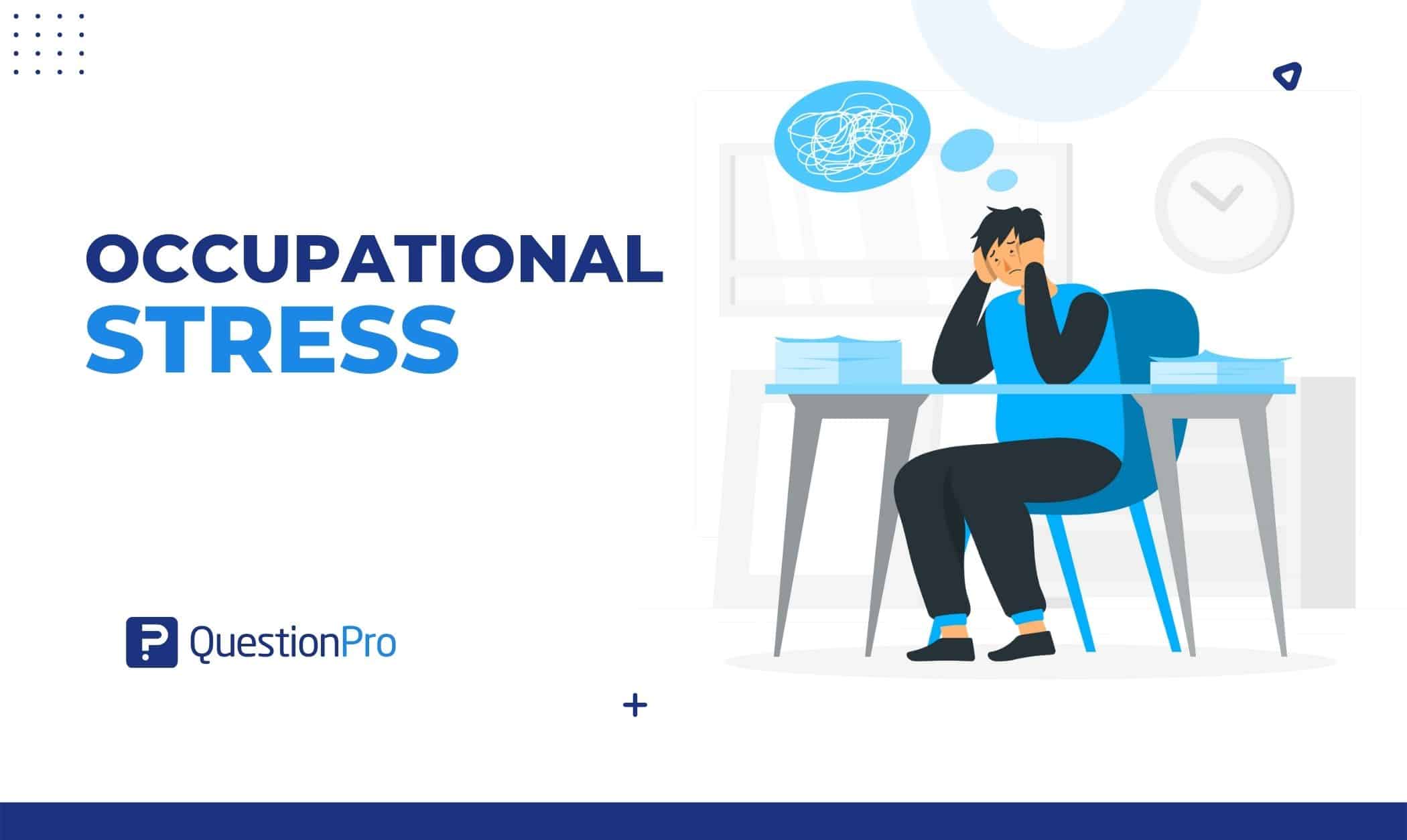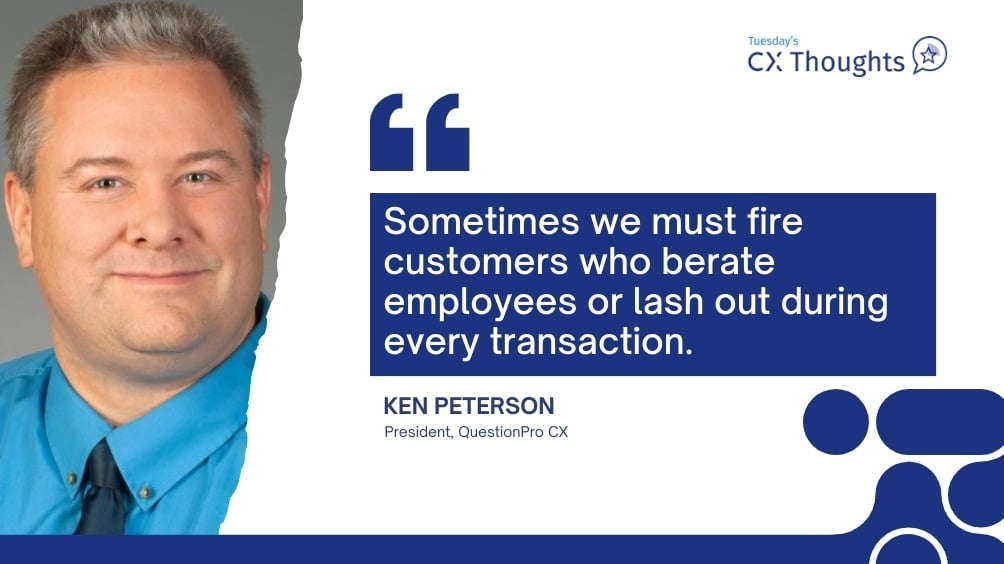
המונח "לחץ" מתייחס לדרישות, או "גורמי לחץ", כמו גם למקורות, ההשפעות והמנחים של תגובת הדחק, תופעה פסיכולוגית. לחץ תעסוקתי משמש לעתים קרובות במגזר העסקי המקצועי כדי לתאר את המתח המתמשך או המסלים שעובד עובר עקב תפקידו, תנאי עבודה מלחיצים, סביבה או לחצים אחרים בעבודה.
לחץ תעסוקתי יכול ללבוש צורות רבות, בהתאם לעובד הבודד, תפקיד העבודה, התרבות הארגונית וגורמים אחרים. גם חברות וגם עובדים מודאגים למדי מלחץ תעסוקתי. 40% מתחלופת מקום העבודה ו-80% מכלל פציעות הלחץ הקשורות לעבודה בארצות הברית קשורות ישירות ללחץ תעסוקתי.
לחץ תעסוקתי, השפעותיו והאפשרות לתחלופת עובדים יכוסו כולם בבלוג זה.
מהו לחץ תעסוקתי?
בהתחשב בהיסטוריה הארוכה של הבעיה, לחץ תעסוקתי צריך להיות מסווג כגורם סיכון. לחץ תעסוקתי הוא מחלה כרונית שלא ניתן לטפל בה, וגם לא מצב מזיק או חריף.
במקום זאת, לחץ תעסוקתי הוא מחלה כרונית המחייבת הבנת האפידמיולוגיה או היסטוריית החיים של הנושא לפני בחינת שיטות חלופיות להגנה, מניעה והתערבות. ניתן לחשוב על שלושה שלבים בעת ניתוח אפידמיולוגיה של לחץ תעסוקתי:
- שלב 1 עוסק בגורמים ללחץ הידועים כגורמי סיכון.
- שלב 2 הוא תגובת הלחץ, תגובה נורמלית וטבעית לדרישות עבודה חיצוניות או לחצים פנימיים.
- שלב 3 עוסק בהשפעות של היסטוריית החיים, שיכולות להיות צורה של מצוקה (רפואית, פסיכולוגית או התנהגותית) או מצבים של יוסטרס (לחץ בריא).
תגובת הלחץ בעבודה מראה הבדלים אינדיבידואליים שונים בנוסף למרכיב העיקרי בהיסטוריית החיים של לחץ תעסוקתי, אשר עשוי לפעול כגורמי הגנה עבור הפרט או להגביר פגיעות. לחץ בעבודה נוטה לפגוע בנקודת תורפה, המתוארת לעתים כעקב אכילס, מכיוון שלא מדובר במצב ספציפי. היא ידועה גם בשם "תיאוריית האיברים החלשים".
סוגי לחץ תעסוקתי
לחץ תעסוקתי הוא נושא שכיח במקום העבודה, המתבטא בדרכים שונות ומשפיע על אנשים באופן שונה. הבנת הסוגים השונים של לחץ תעסוקתי היא חיונית עבור עובדים ומעסיקים כדי לשמור על סביבת עבודה בריאה ופרודוקטיבית. במאמר זה נבחן כמה סוגים נפוצים של לחץ תעסוקתי:
עומס עבודה:
אחת הצורות המוכרות ביותר של לחץ תעסוקתי מתרחשת כאשר העובדים עמוסים בעבודה מוגזמת במסגרת זמן נתונה. לחץ בעומס העבודה עלול להוביל לתחושת עומס וצורך בזמן רב יותר כדי להשלים משימות ביעילות.
עמימות תפקידים:
כאשר עובדים זקוקים לבהירות רבה יותר לגבי תפקידיהם, תחומי האחריות שלהם או מה מצופה מהם, זה יכול להוביל ללחץ בעבודה. היא מתעוררת לעתים קרובות בארגונים עם תקשורת לקויה ותיאורי תפקיד לא ברורים, המשפיעים על השליטה בעבודה ועל רמות הלחץ הנתפסות.
לחץ פיזי:
עבודות מסוימות כוללות עבודות תובעניות מבחינה פסיכולוגית, כגון הרמת משאות כבדים, שעות עמידה ארוכות או חשיפה לתנאי עבודה מלחיצים סביבתיים קשים. לחץ פיזי עלול להוביל לעייפות ולפגוע בבריאות העובדים ובבטיחות התעסוקתית.
לחץ נפשי:
תפקידים הדורשים רמות גבוהות של מעורבות קוגניטיבית, קבלת החלטות מתמדת או פתרון בעיות יכולים להוביל ללחץ נפשי. לחץ נפשי נפוץ בתפקידים כגון ניהול, שירותי בריאות ושירותי חירום, ומדגיש את הצורך באסטרטגיות לניהול מתח בעבודה.
מתח נפשי:
עיסוקים הדורשים ניהול רגשות, התמודדות עם לקוחות או לקוחות תובעניים, או עדים לאירועים טראומטיים יכולים להוביל ללחץ נפשי. עובדי בריאות, מגיבים ראשונים ונציגי שירות לקוחות נמצאים לעתים קרובות בסיכון ועשויים להפיק תועלת מאמצעים למניעת לחץ בעבודה.
לחץ במקום העבודה:
קונפליקט עם עמיתים או ממונים, בריונות במקום העבודה או תרבות ארגונית רעילה עלולים לגרום ללחץ משמעותי במקום העבודה. מצבים כאלה עלולים לפגוע בבריאות הנפש ולדרוש עיצוב מחדש של מקום העבודה ושינויים בהתנהגות הארגונית.
חוסר ביטחון תעסוקתי:
חששות לגבי יציבות תעסוקתית, פיטורים או אובדן עבודה יכולים ליצור לחץ משמעותי בעבודה, ולהשפיע על הביטחון הכלכלי של העובד ועל רווחתו הכללית. ניהול מתח תעסוקתי ואמצעי ביטחון תעסוקתי יכולים לעזור להקל על צורה זו של מתח.
מתח איזון בית-עבודה:
איזון בין דרישות עבודה לבין אחריות אישית בחיים יכול להיות מאתגר. שעות ארוכות, שעות נוספות מוגזמות וחוסר גמישות תורמים ללחץ איזון בית-עבודה, ומדגישים את הצורך בטכניקות לניהול מתח תעסוקתי.
לחץ כלכלי:
שכר נמוך, חוסר יציבות פיננסית או חובות מוגזמים יכולים לתרום באופן משמעותי ללחץ בעבודה ולהשפיע על איכות החיים הכוללת של העובד. מעסיקים יכולים לטפל בכך על ידי קידום תוכניות בריאות פיננסיות ויוזמות למניעת מתח.
לחץ עבודה במשמרות:
כדי להקל על הלחץ בעבודה במשמרות, אמצעי בריאות תעסוקתית ובטיחות ובריאות תעסוקתית חיוניים בשל שעות עבודה לא סדירות, כולל משמרות לילה או משמרות מתחלפות, שעלולות לשבש דפוסי שינה ולהוביל לבעיות בריאות נפשיות ופיזיות. אמצעי בריאות ובטיחות תעסוקתית חיוניים כדי להפחית את הלחץ הזה.
בנוסף לצורות הנפוצות של לחץ תעסוקתי, חיוני לשקול שליטה בעבודה, משימות עבודה, מניעת מתח, בריאות העובדים ורווחתם. יתר על כן, טיפול בנושאים הקשורים ללחץ ממושך, לחץ ארגוני, עיצוב מחדש של עבודה, בריאות תעסוקתית, מניעת מתחים, ניהול מתח והתנהגות ארגונית חיוני לניהול יעיל והפחתת מתח במקום העבודה. הכרה וטיפול בגורמי לחץ אלה היא הצעד הראשון. מעסיקים ועובדים יכולים לעבוד בשיתוף פעולה כדי ליצור סביבת עבודה תומכת יותר, בריאה יותר ובסופו של דבר פרודוקטיבית יותר.
כיצד פועל לחץ תעסוקתי
למרות שהגורמים ללחץ תעסוקתי יכולים להיות שונים מאדם לאדם, חשוב להבין כי עובדים בכל הארגונים, לא משנה כמה גדולים או קטנים, יכולים לחוות לחץ הקשור לעבודה. מקרים משמעותיים של לחץ תעסוקתי כוללים:
- יישום ארגוני של מדיניות ונהלים קפדניים: אין ספק, כל חברה צריכה לשמור על מדיניות, פרוטוקולים ונהלים. אבל להיות קפדני מדי יכול לגרום ללחץ תעסוקתי.
- הזדמנויות מוגבלות לקריירה ולהתפתחות אישית: סיכוי קטן או אפסי להתפתחות אישית וקריירה מרתיע עובדים ובונה לחץ תעסוקתי.
- חילוקי דעות בין מחלקות או קבוצות בתוך ארגון: חילוקי דעות או קונפליקטים בין אנשים או מחלקות יכולים גם להוביל ללחץ תעסוקתי.
- מיקרו-ניהול וניהול כושל של כוח העבודה: מיקרו-ניהול לא תמיד מועיל. לפעמים זה גורם לניהול כושל, מה שגורם ללחץ במקום העבודה.
- חוסר הסיוע של מחלקת משאבי אנוש: אם משאבי אנוש לא עושים את עבודתם כראוי, זה מובן מאליו שהעובדים יהיו לחוצים וחסרי מוטיבציה.
- דאגות רגשיות, סביבתיות או תעסוקתיות: לחץ במקום העבודה יכול להתפתח עקב בעיות אישיות, רגשיות, סביבתיות או אחרות, וגורמים אלה יכולים גם לתרום ללחץ תעסוקתי.
- בריונות, הערכת חסר והטיה גזעית: בריונות, גזענות או זלזול במישהו אינם בריאים לאף אדם. אז ברור שהדברים האלה יוצרים לחץ בעבודה.
- בעיות בניהול זמן: אי קבלת הנחיות ועבודה בזמן ופספוס ציר הזמן להגשה יכולים ליצור לחץ תעסוקתי.
- אין ייעוץ או הכוונה מקצועיים: לחץ תעסוקתי מתרחש אם ראש הצוות, מחלקת משאבי אנוש או מעסיקים אינם מייעצים ומדריכים עובדים באופן מקצועי בפעילויות למניעת מתח שעשויות להזדקק להדרכה.
- לעבוד יותר מדי: יותר מדי לחץ בעבודה יוצר כאוס בין העבודה לחיים הפרטיים, וכתוצאה מכך מתח בעבודה.
- איומי פיטורים חוזרים ונשנים: איום מתמיד בפיטורים לא יגרום לעובדים לעבוד קשה יותר מתוך פחד, אלא יגביר את הלחץ במקום העבודה.
- הטבות, הפחתות שכר והפסדי שכר: אם חברה או משאבי אנוש מקצצים שכר או בונוס מסיבות טריוויאליות ללא התחשבות, העובדים יהיו לחוצים בעבודתם ובחייהם האישיים.
לחץ תעסוקתי והסיכון לתחלופת עובדים
סיכון התחלופה בפועל מוגבר על ידי לחץ תעסוקתי. מניעת תחלופת עובדים עשויה להיעזר על ידי נקיטת צעדים להפחתת הלחץ.
רקע:
למרות שמחקרים רבים בחנו את הקשר בין לחץ בעבודה לתחלופה, מחקרים אלה מסתמכים על מספרי מדגם קטנים, דיווח עצמי של המשתתפים, כוח העבודה בתחום הבריאות או מחקרי חתך.
מחקר זה השתמש בנתוני מחזור מרישומי חברות כדי לאשר אם לחץ תעסוקתי מגדיל את ההסתברות לתחלופה במחקר עוקבה פרוספקטיבי בקנה מידה גדול.
שיטות:
במחקר השתתפו 3892 גברים ו-5765 עובדות בארגון שירותים פיננסיים בגילאי 20 עד 49. הם היו במעקב מאוקטובר 2012 עד 1 באפריל 2016, והם ניצלו את רישומי החברה כדי לאתר עובדים שהתפטרו.
שאלון הלחץ הקצר בעבודה מזהה עובדים עם רמות מתח גבוהות ונמוכות. השתמשנו במודלים של סיכונים פרופורציונליים של קוקס כדי לקבוע יחסי סיכון לתחלופה של עובדים בסטרס גבוה. בנוסף, חישבנו את הסיכונים המיוחסים לאוכלוסייה בנפרד לגברים ולנשים.
תוצאות:
122 גברים ו-760 נשים פרשו במהלך 11,475,862 ימי אדם. לאחר שקלול גיל, משך השירות, סוג התפקיד והתפקיד, רווחי הסמך של 95% עבור עובדים בלחץ גבוה שעוזבים את עבודתם היו 2.86 (1.74-4.68) לגברים ו-1.52 (1.29-1.78) לנשים.
גברים היו בסיכון גבוה ב-8.2% לחוות לחץ גבוה בהשוואה לנשים. לעומת זאת, נשים היו בסיכון גבוה ב-8.3% לדווח על רמות מתח גבוהות. בנוסף, ציוני רכיבים, כולל גורמי לחץ בעבודה, תגובת לחץ פסיכולוגית/פיזית, תמיכה חברתית במקום העבודה ומתח בעבודה (המאופיין בדרישות עבודה גבוהות ושליטה נמוכה בעבודה), נמצאו קשורים באופן מובהק לתחלופה (עמ < 0.05).
מילים אחרונות:
מתח בעבודה מגדיל את הסיכוי שאנשים יעזבו את עבודתם. נקיטת צעדים למניעת לחץ תעסוקתי בעבודה יכולה לעזור למנוע מעובדים לעזוב.
כיצד להפחית את הלחץ התעסוקתי
הפחתת מתח תעסוקתי חיונית לשמירה על רווחה כללית, שביעות רצון בעבודה, ובסופו של דבר, את התפוקה של העובדים והמעסיקים כאחד. בסביבת העבודה המהירה של ימינו, לא ניתן להפריז בהשפעה של לחץ הקשור לעבודה על החיים האישיים, הביצועים בעבודה והבריאות התעסוקתית. כאן, נחקור אסטרטגיות שאנשים ומעסיקים יכולים ליישם כדי להקל על הלחץ בעבודה ולטפח סביבת עבודה תומכת יותר.
ליחידים:
- ניהול זמן: ניהול יעיל של הזמן שלך הוא חיוני למניעת מתח. תעדוף משימות והצבת יעדים מציאותיים יכולים לשמור על הסדר ולהפחית את הלחץ של מועדים מתקרבים. שקול להשתמש בכלים כגון רשימות משימות לביצוע או אפליקציות לניהול זמן כדי לסייע במאמץ זה.
- למד לומר לא: הכירו בגבולות שלכם והימנעו מהתחייבות יתר. דחייה מנומסת של משימות או פרויקטים נוספים כאשר עומס העבודה שלך מכריע היא חיונית לשמירה על איזון בריא בין העבודה לחיים הפרטיים.
- חפש תמיכה: אל תהססו ליצור קשר עם עמיתים, חברים או איש מקצוע בתחום בריאות הנפש אם אתם חווים לחץ הקשור לעבודה. שיתוף רגשות יכול לספק תובנות יקרות ערך ותמיכה רגשית, ובסופו של דבר לתרום לשליטה במחלות ולרווחה נפשית.
- למד מיומנויות ניהול מתח: הצטיידו בטכניקות לניהול מתחים כמו פתרון בעיות, אסרטיביות ואסטרטגיות התמודדות. מיומנויות אלה יכולות להעצים אותך לנווט במצבים מאתגרים בצורה יעילה יותר, לשפר את ביצועי העבודה ולהפחית את הסיכון לבעיות בריאות תעסוקתית.
- בחירות אורח חיים בריא: עשו בחירות מודעות כדי לתמוך ברווחתכם. תזונה מאוזנת, הגבלת צריכת אלכוהול וקפאין והימנעות מעישון משפרים את הבריאות האישית ובונים חוסן ללחץ.
למעסיקים:
- קידום איזון בית-עבודה: עודדו את העובדים לשמור על איזון בריא בין העבודה לחיים הפרטיים. הצע לוחות זמנים גמישים, אפשרויות עבודה מרחוק וחופשה בתשלום כדי לעזור להקל על הלחץ בעבודה ולהפחית את הלחץ שגולש לחיים האישיים.
- ניהול עומסי עבודה: ודא שעומסי העבודה ניתנים לניהול ומציאותיים. עומס יתר על עובדים עם משימות מוגזמות ולוחות זמנים צפופים יכול להגביר את הלחץ בעבודה ולהשפיע לרעה על ביצועי העבודה.
- הדרכה ופיתוח: השקיעו בפיתוח המקצועי של העובדים שלכם. לספק הכשרה בניהול מתח, ניהול זמן, ובניית חוסן כדי לשפר את כישוריהם ואת רווחתם. הצטיידות כוח העבודה שלך במיומנויות אלה יכולה לסייע במניעת בעיות הקשורות ללחץ ולהגביר את שביעות הרצון הכוללת בעבודה.
- צרו סביבה תומכת: טפח תרבות במקום העבודה שמעריכה ותומכת ברווחת העובדים. תגמול והכרה בעובדים על מאמציהם יכולים לעזור למורל ולהפחית את הלחץ בעבודה.
- תוכניות בריאות: הציעו תוכניות בריאות מקיפות הכוללות גישה לחדר כושר, מפגשי מיינדפולנס או גישה לתזונאי. התמקדות בבריאות נפשית ופיזית יכולה להפחית את הלחץ בעבודה ולקדם בריאות תעסוקתית.
בסביבת העבודה התחרותית של היום, לחץ בעבודה מגביר את הסיכון לשחיקה ולבעיות בריאות שונות של העובדים. אנשים יכולים לנקוט צעדים פרואקטיביים כדי לנהל את הלחץ, בעוד מעסיקים יכולים לשתף פעולה כדי ליצור סביבת עבודה תומכת. יחד, מאמצים אלה יכולים למתן את ההשפעות השליליות של לחץ בעבודה ולתרום למקום עבודה בריא ופרודוקטיבי יותר.
כיצד QuestionPro יכול לעזור לפתור לחץ בעבודה
QuestionPro, פלטפורמת סקרים ומחקר חזקה, יכולה להיות חיונית בהתמודדות ובהפחתת לחץ בעבודה ארגונית. סקרים אלה יכולים להתעמק בהיבטים שונים כגון עומס עבודה, דרישות עבודה, דינמיקה בינאישית ושביעות רצון כללית בעבודה. מה שחשוב במיוחד הוא ש-QuestionPro מציעה פלטפורמה מאובטחת וחסויה. פלטפורמה זו מטפחת סביבה בטוחה לעובדים, המאפשרת להם לשתף את חששותיהם בפתיחות ולספק הצעות ללא חשש מההשלכות.
בנוסף, QuestionPro מציע את היתרון של benchmarking. מעסיקים יכולים להשוות את תוצאות הסקר הקשור ללחץ של הארגון שלהם עם אמות מידה בתעשייה. ניתוח השוואתי זה מספק הבנה עמוקה יותר של איפה הארגון עומד על אחרים במונחים של לחץ בעבודה. תובנות כאלה יכולות להיות יקרות ערך בקביעת תחומים הדורשים מיקוד מיידי.
עם תובנות אלה, מעסיקים יכולים לפתח תוכניות פעולה כדי להפחית את הלחץ בעבודה.
תוכניות פעולה אלה עשויות לכלול שינוי מדיניות או אופטימיזציה של תהליכי עבודה. בנוסף, הם עשויים לכלול מתן משאבים נוספים כדי לתמוך ביעילות בעובדים בניהול מתח.
מסקנה
מחלקות משאבי אנוש יכולות להפחית באופן משמעותי את רמות הלחץ התעסוקתי על ידי יישום תוכניות, פרויקטים ואסטרטגיות. זה גורם לאנשי הצוות להרגיש מעודדים, נתמכים ובבית.
על ידי קידום סביבת עבודה טובה ופרואקטיבית, מחלקות משאבי אנוש יכולות לעזור להפחית את הלחץ במקום העבודה של העובדים.
חיוני לטפל בהקדם בבריונות, אפליה והתנהגות מטרידה. בנוסף, חיוני לתמוך במדיניות דלת פתוחה שבה אנשים מרגישים בטוחים ונינוחים כאשר הם מדווחים על התנהגות כזו.
QuestionPro היא הרבה יותר מסתם תוכנת סקרים. זה מאפשר לך לפקח על התפיסה של העובדים שלך ואת מידת האמון הארגוני בעסק שלך ומודד את האקלים הארגוני. יש לנו מספר תכונות הכלולות בחבילה שנקראת QuestionPro Workforce.







